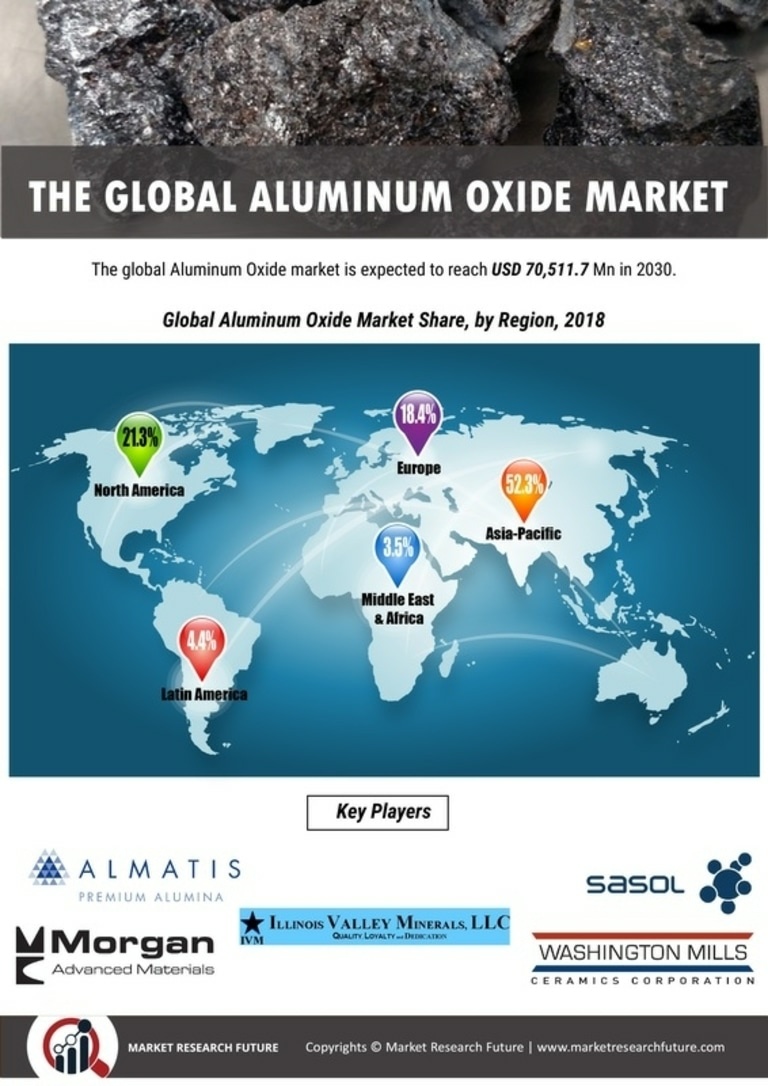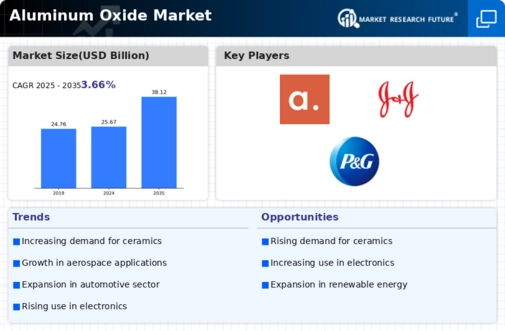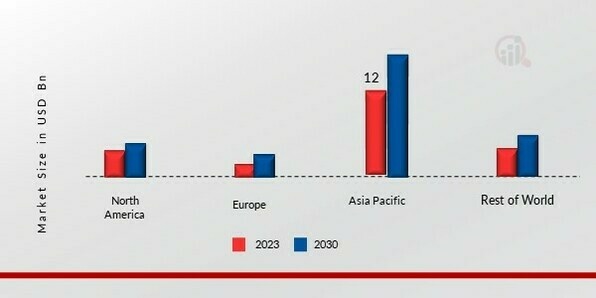Market Growth Projections
The Global Aluminum Oxide Market Industry is projected to experience substantial growth over the next decade. With a market size anticipated to reach 25.67 USD Billion in 2024 and further expand to 38.12 USD Billion by 2035, the industry is poised for a robust trajectory. The compound annual growth rate of 3.66% from 2025 to 2035 indicates a steady increase in demand across various sectors, including automotive, electronics, and construction. This growth is driven by technological advancements, rising applications, and a heightened focus on sustainability, suggesting a promising future for aluminum oxide in the global market.
Growing Demand in Automotive Sector
The automotive sector is experiencing a notable surge in demand for aluminum oxide, primarily due to its lightweight properties and resistance to corrosion. As manufacturers strive to enhance fuel efficiency and reduce emissions, aluminum oxide is increasingly utilized in various components, including brake pads and engine parts. The Global Aluminum Oxide Market Industry is projected to reach 25.67 USD Billion in 2024, reflecting the automotive industry's shift towards sustainable materials. This trend is expected to continue, with a compound annual growth rate of 3.66% anticipated from 2025 to 2035, indicating a robust future for aluminum oxide in automotive applications.
Rising Applications in Construction
Aluminum oxide is gaining traction in the construction industry, particularly in the production of high-performance concrete and as a component in various building materials. Its durability and resistance to wear make it an attractive option for construction applications. The Global Aluminum Oxide Market Industry is benefiting from increased infrastructure development and urbanization trends worldwide. As cities expand and require more robust materials, the demand for aluminum oxide is likely to rise. This trend aligns with the projected market growth, which is expected to see a CAGR of 3.66% from 2025 to 2035, indicating a sustained interest in aluminum oxide for construction purposes.
Technological Advancements in Manufacturing
Innovations in manufacturing processes are enhancing the efficiency and quality of aluminum oxide production. Techniques such as advanced refining and processing methods are enabling manufacturers to produce higher purity aluminum oxide, which is crucial for various applications, including ceramics and abrasives. The Global Aluminum Oxide Market Industry stands to benefit from these advancements, as they not only improve product quality but also reduce production costs. As manufacturers adopt these technologies, the market is expected to experience significant growth, potentially reaching 25.67 USD Billion by 2024, underscoring the importance of technological progress in driving market dynamics.
Expansion in Electronics and Electrical Applications
The electronics and electrical sectors are increasingly adopting aluminum oxide due to its excellent insulating properties and thermal stability. This material is essential in the production of substrates for electronic devices, capacitors, and insulators. The Global Aluminum Oxide Market Industry is poised for growth as the demand for advanced electronic components rises. With the proliferation of smart devices and the Internet of Things, the market is expected to witness significant expansion. By 2035, the market is projected to reach 38.12 USD Billion, highlighting the critical role of aluminum oxide in supporting technological advancements in electronics.
Environmental Regulations and Sustainability Initiatives
Increasing environmental regulations and a global shift towards sustainability are driving the demand for aluminum oxide as a green alternative in various industries. Its recyclability and lower environmental impact compared to other materials make it an attractive choice for manufacturers aiming to comply with stringent regulations. The Global Aluminum Oxide Market Industry is likely to see growth as companies prioritize sustainable practices. This trend is expected to contribute to the market's expansion, with projections indicating a potential market size of 38.12 USD Billion by 2035, reflecting the growing emphasis on environmentally friendly materials.


 Source: Secondary Research, Primary Research, Market Research Future Database and Analyst Review
Source: Secondary Research, Primary Research, Market Research Future Database and Analyst Review



